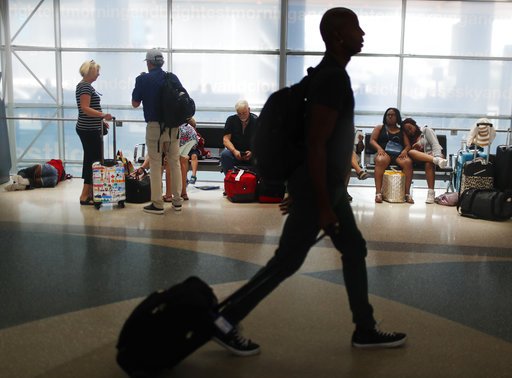When JetBlue Airways hiked its checked bag fees by $5 on Aug. 27, flyers braced for other carriers to follow suit. United Airlines did so quickly, followed this week by Delta Air Lines and American Airlines.
All four domestic airlines boosted the fee for the first checked bag from $25 to $30 and the second from $35 to $40. But passengers, experts emphasize, don’t have to pay the fee if they follow a few travel strategies, from airline selection to packing less.
“For folks who are bothered by fees, there actually are options,” said Gary Leff, the author of the aviation blog A View from the Wing. “Southwest Airlines carries more passengers domestically than anyone else and they don’t charge change fees or for bags.”
American Airlines was the first carrier to implement checked-bags fees, then $15, in 2008, and the practice has been standard on most domestic flights (a checked bag on most international routes is still free). Southwest has been the exception.
Checked-bag fees are part of a constellation of extra charges airlines have implemented for preferred seats on planes, such as those in the front of economy, or ticket changes. IdeaWorksCompany, a consultancy that analyzes ancillary fees, projected airline fee revenue exceeded $82 billion worldwide last year.
Get the right status
Many travelers may feel nickel-and-dimed by the practice, but for the airlines, raising fees increases revenue without reaching into the pockets of their most frequent flyers.
“Checked-bag fees tend to fall disproportionately on price-sensitive leisure travelers,” Leff said. “Business travelers are less price sensitive than leisure travelers and often they’re not checking bags. If they do, they have status that means they don’t pay.”
Obtaining elite status usually requires flying a lot with one carrier. Elite flyers often get early boarding, when there’s still room in the overhead bins for their carry-ons, and free checked bags. The same is true for passengers flying in business or first class, normally tickets that cost much more than economy plus the $60 round-trip checked bag fee.
Branded credit cards
A cheaper way to gain status with an airline is to carry their branded credit card. Most of these cards cost less than $100 a year and, if used to purchase the airline ticket on that carrier, grant cardholders earlier boarding and a free checked bag, sometimes for friends or family booked on the same itinerary. With bags costing $60 round trip, the card pays for itself in, at most, two trips a year.
“In general, airline credit cards are best in allowing you to avoid checked-bag fees,” said Brian Kelly, the founder and chief executive of ThePointsGuy.com, a website that advises on maximizing credit card points. “Airline cards are rich on perks, but generally not the best when it comes to earning miles.”
For everything else, Kelly recommends cards like Chase Sapphire that reward more points per dollar spent that can be used to get free tickets on a number of airlines, rather than restricting card carriers to one airline, as airline cards do.
Rely on carry-on
While some low-cost airlines, including Spirit and Wow, tack on fees for carry-ons, in most cases flyers can avoid checked-bag fees altogether by traveling solely with a carry-on. New airplane designs are helping. American Airlines’ new 737 MAX planes have enough space to allow one bag aloft per passenger, and the carrier is in the midst of retrofitting its older 737s, about 250 of them, with the larger bins.
Besides saving money, there are other advantages to relying on carry-on bags. Since airlines require passengers to fly on the plane with their checked bag, those with stowed luggage can’t standby for an earlier flight. “When you check a bag, it really cramps your style with flight changes,” Kelly said.
And there’s always the mail to help out with the extras. “If I’ve acquired stuff on a trip that doesn’t fit, I’ll go to the post office and mail it back home,” said George Hobica, the founder of AirfareWatchdog.com. He also uses United Parcel Service. “You have better tracking and insurance and you don’t have to wait to check in or at the baggage carousel on the other end.”
Julie Falconer, author of the travel blog A Lady in London, has only used carry-on luggage for 11 years to 111 countries. She recommends miniature versions not just of bath products, which are required in order to take aboard, but mini travel hairbrush, deodorant and sunscreen. She rolls all clothing — a capsule wardrobe in which everything goes together — to save space, and takes only one pair of shoes.
“If you’re going to travel with just a carry-on, you have to make a couple of sacrifices, and if I’m not wearing the exact right shoes, then that’s one of those sacrifices,” Falconer said. “I have a lot of black, and I wear jeans with everything.”
